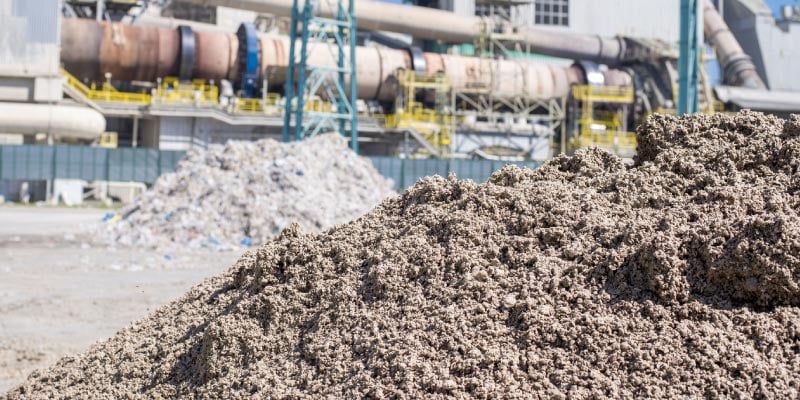Creating Value with Alternative Engineered Fuels
December 19, 2023

As sustainability continues to evolve into a top priority for legislators, investors and consumers alike, companies dealing with hard-to-recycle materials are being placed under greater scrutiny. In the past, these generators often relied on landfill disposal for their “unsalvageable” materials, but as the public turns its eye (and demand) toward greener alternatives, that is no longer an option. Companies that wish to avoid risk and remain competitive must utilize more modern options. One such solution is alternative fuel engineering.
How AEFs are Made
Alternative engineered fuels (AEFs) are any combustible industrial byproduct other than traditional fossil fuels, such as coal or natural gas. AEFs are made from industrial and post-consumer waste components that are too contaminated or complex to properly recycle.
Typically, about 70% to 80% of an AEF is made up of paper or plastic from a curbside recycling program. The remaining 20% to 30% is industrial waste that might come in containers, such as oily rags, resins, carbon black or rubber. Other common materials used in the manufacture of AEFs include mixed waxy papers and cardboard, rubber and foam. An AEF producer blends and shreds these materials to create a solid fuel that resembles garden mulch, typically with particles smaller than one inch or so. The material is then passed through a rare-earth magnet and an eddy current to remove metal and debris.
How AEFs are Used
While the use of AEFs has rapidly growing potential, they’re primarily purchased for use in cement and lime kilns in place of coal or natural gas. Using AEFs instead of coal or gas helps these manufacturers address climate change, achieve environmental, social and governance (ESG) goals and meet toughening government policies. Typically, 10% to 20% of a kiln’s fuel is made up of AEFs, though some kilns use as much as 30%. Usage is expected to rise to 50% and beyond in the next three to five years.
The Benefits of AEFs
AEFs don’t only remove waste otherwise destined for landfills—they also burn far more cleanly than the fossil fuels they replace. For example, AEFs burn cleaner than coal, releasing significantly smaller amounts of CO2, sulfur and nitrogen oxide than their traditional counterparts. In fact, some AEFs have the potential to be carbon neutral, or even carbon negative when the avoided impacts of waste-induced methane are considered.
For waste generators, AEF production also offers multiple financial benefits. Not only can recovering and recycling otherwise lost resources introduce new revenue streams, but it can also avoid the costs of rising tip fees and avoid the fines and payouts due to compliance violations or the many other risks tied to landfills. In addition, by actively working toward ESG goals, businesses can increase the value of their brand, which can lead to sales growth, investments and the ability to attract desirable partnerships and talent. AEF buyers, such as cement and lime kiln operators, reap similar ESG benefits, and they can also see potential savings with (often) less expensive and (always) more efficient alternatives to fossil fuels.
A Win-Win Solution
Alternative fuel engineering is a win for both planet and prosperity. Not only does it divert waste and greenhouse gas emissions from the environment, it helps businesses create value from their unsalvageable materials in the form of meeting ESG goals, mitigating risk and generating revenue.
To learn more about how alternative engineered fuels can benefit your business, download our article, The Applications and Advantages of Alternative Fuel.